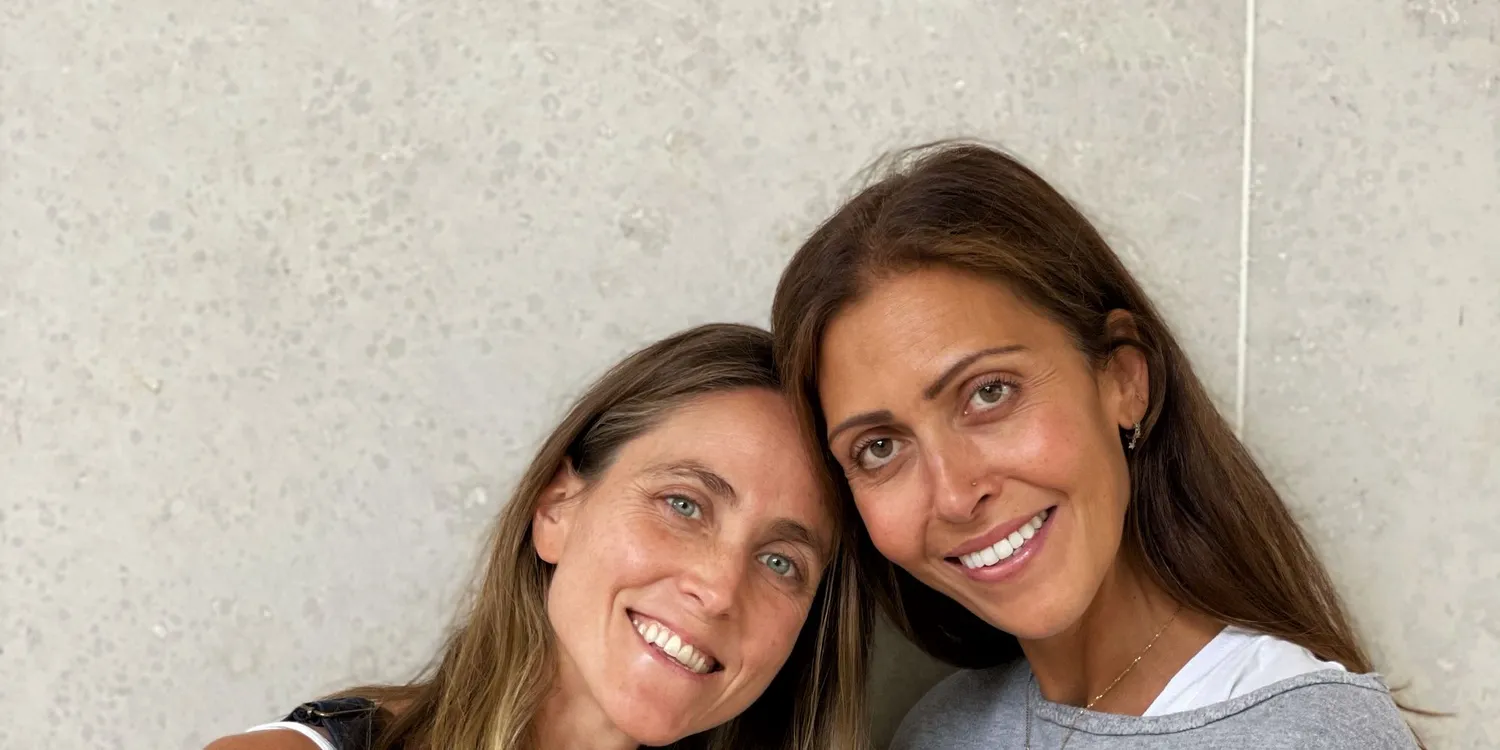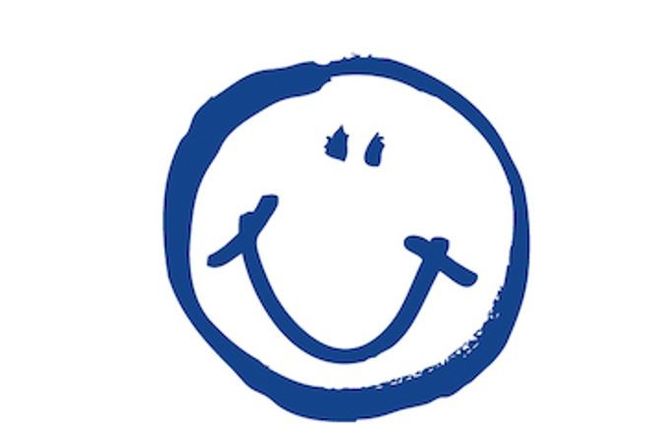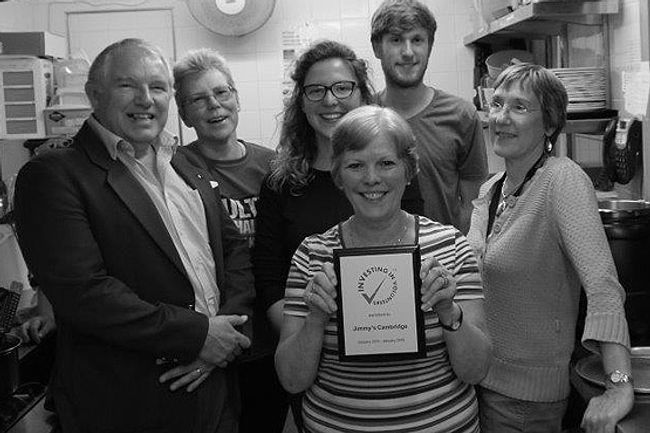11/01/2022
We love to champion the extraordinary people who make Cambridge the vibrant city it is today. This month, we shine the spotlight on a programme that brings art to the heart of hospitals, lifting the spirits of patients and their medical teams.
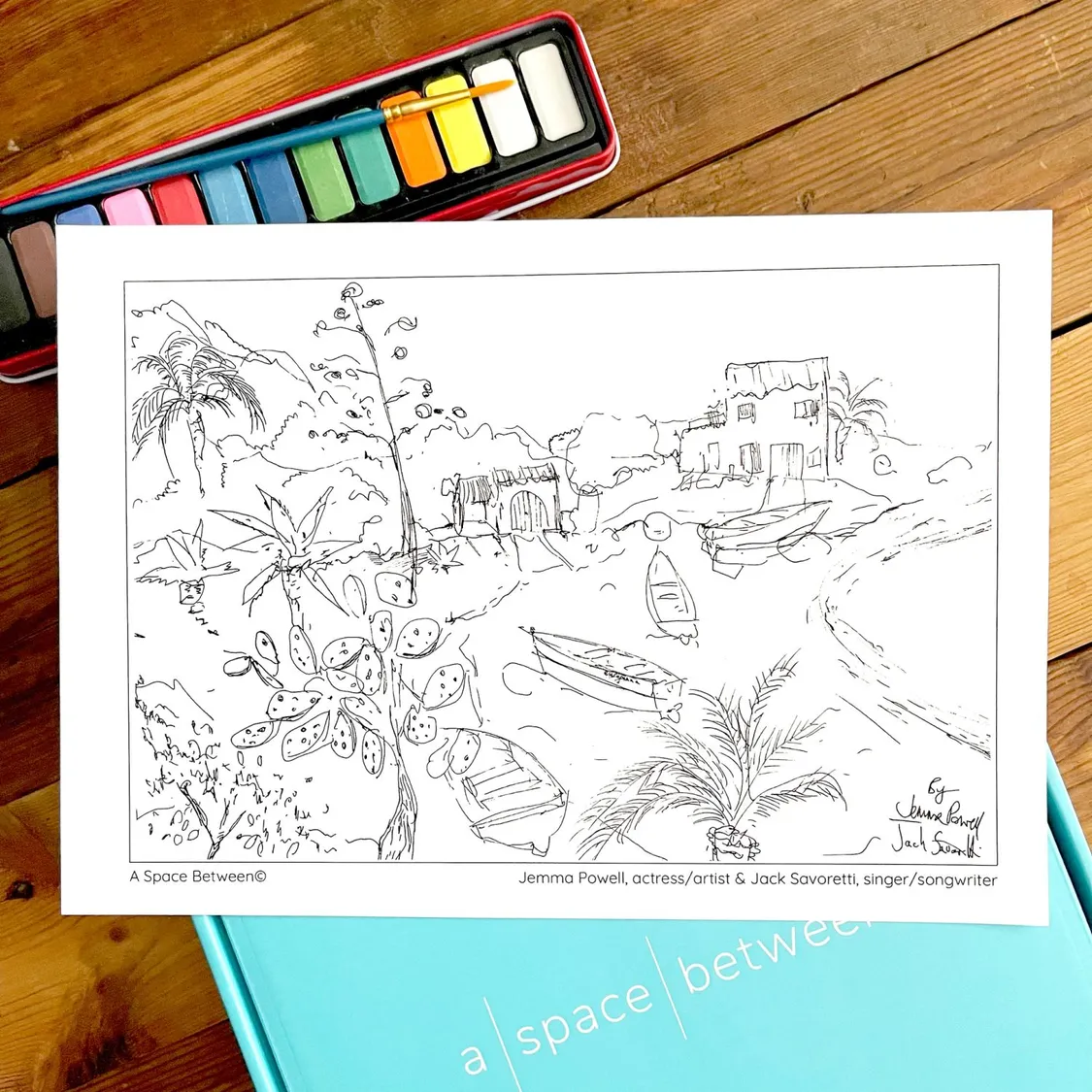
When Tianna Moquette Dagher was in hospital, her best friend Emily Halban knew how she felt and what might help, having been an in-patient herself. What better gift to fill those endless hours of anxiety, enforced confinement, and boredom on the one hand, and the 24-hour soundscape of beeping monitors and poking and prodding by strangers on the other, than a cheery box of coloured pens, pencils and a colouring book? Removing the pressure to draw something from scratch, colouring-in can be the first step for someone to connect with their innate creativity and lose themselves in the joyful simplicity of making art; to detach from their surroundings and enjoy a moment of pause: a space between.
The friends resolved to do something to elevate creativity as a pillar of health, and serendipity was on their side. “In 2017 a cross-party report was published on the impact of the Arts on health and wellbeing, so patient experience was front of mind," Emily explains. “It was the right time, the right moment. The report paved the way.”
In October 2019, Tianna, Emily, and their friend Fardokht Sharifi-Yazdi combined their shared experience of being in hospital to launch A Space Between and introduce art programmes to hospital settings. The initiative proved so popular, it won a Point of Light Award from Prime Minister Boris Johnson.
The aim is to create a collective art space that breaks down patient-carer boundaries and generational barriers by providing ‘art stations’ with artists materials on wards for patients, their visitors – and staff – to enjoy throughout the day. These might be papers, paints, pencils and pens, or black and white illustrations donated by artists for people to colour in. “It’s about the act of doing or doodling or being together without talking. It leads to a connection with the self,” Emily says. “We’re not claiming to be art therapists. At the time, pre-Covid, we wondered if we would step on the their toes, but our work is different although complementary.”
Tianna adds, “A Space Between is about channelling anguish, escaping boredom, and blocking out noise for that one moment where art can take over and do its thing. If anything, the pandemic has heightened the focus on mental wellbeing.”
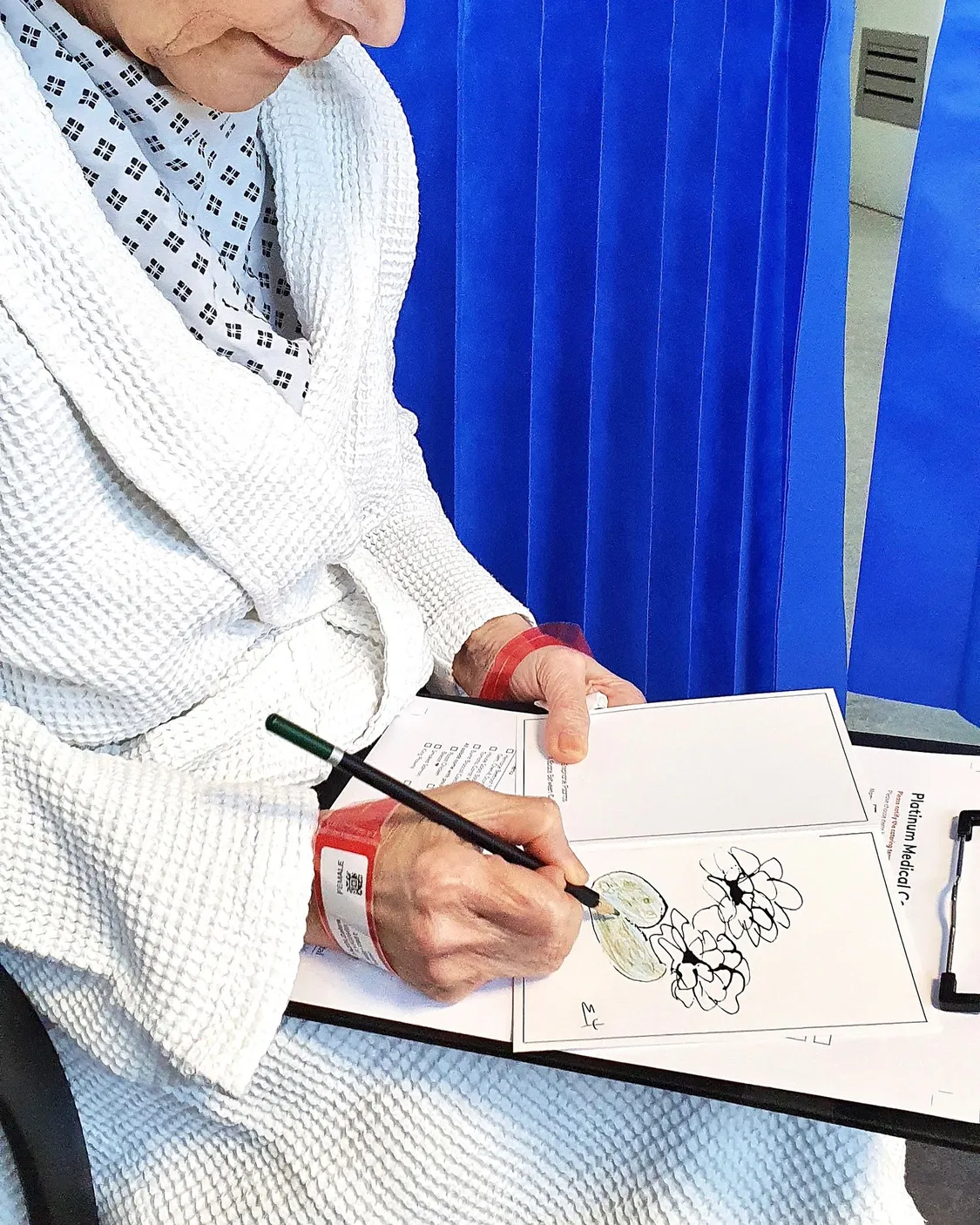
How these elegant, eloquent ladies persuaded hospitals to allow art materials onto wards when they barely allow flowers at the best of times is something of a miracle. “We were surprised by how welcoming the hospitals were,” Emily recalls. “We thought it would be a hard fight, but it was open arms.”
To continue the project during the Corona crisis, when patients were not even allowed to see family, the Space Between team created individual boxes of art supplies to sidestep the issue of contaminated materials. “The boxes were initially a reaction to the pandemic, but now they are crucial to provide greater reach and access,” Tianna says. “It was not our intention, but we have become a facilitator in a box. Some hospitals have an activities coordinator, but with a tiny budget (often a mere £25 per month). They literally have to make photocopies of their materials. Now our boxes are used to further the art therapists’ work, and any artists-in-residence often bring the boxes to hospital.”
Part of the success of the Space Between project is that it doesn’t require pre-existing talents or skills to participate. “When volunteers or patients say, ‘Oh, we’re not artists’ we say, ‘We’re not either’,” Emily says. “It’s about the process. The boxes are not prescribed or analytic. Hospitals needn’t be a parallel world – they’re another community in need.”
During the pandemic, the project gained momentum as the team connected patients across the world in an online art symposium, and received more than 600 drawings from 40 countries from patients aged four upwards. “The artists we work with are touched when they see how someone interprets their work; how a patient in India, say, might colourise or adapt it,” Tianna reveals. “Some artists were initially apprehensive, then once they get involved they are so moved; the programme is bringing them something.
Tianna adds, “We’re not seeking to be a research project. Our ‘impact report’ is the testimonials we receive; the genuine responses from patients and volunteers who have taken part.”
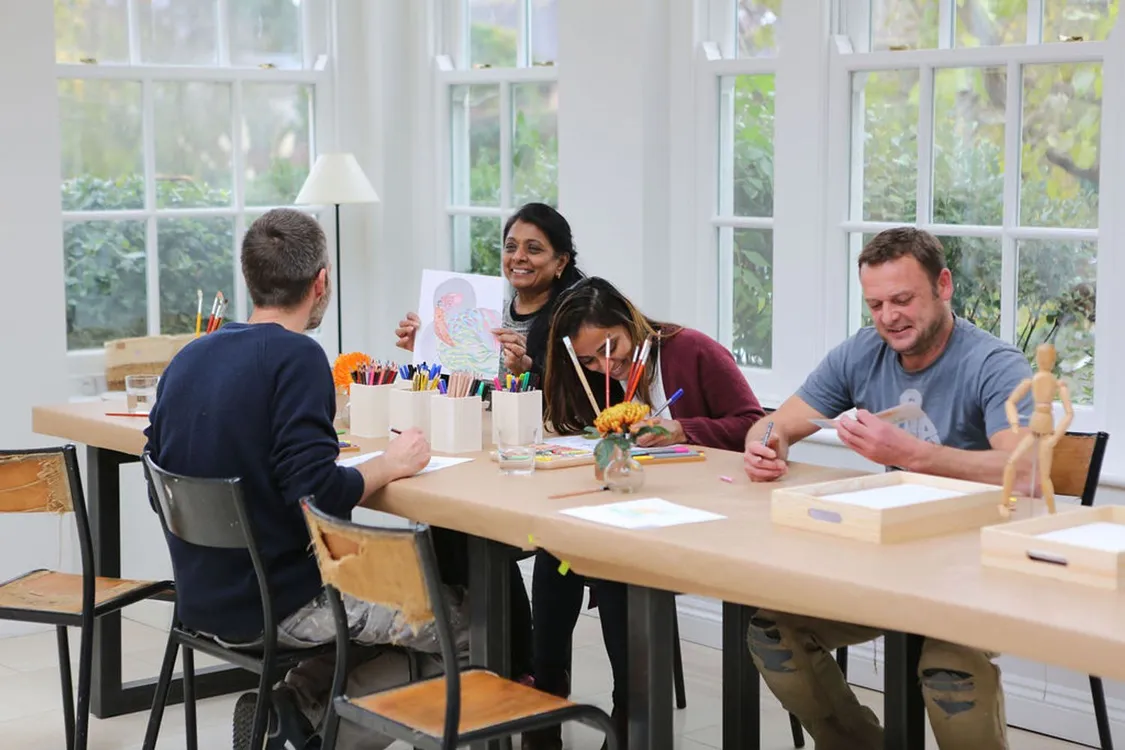
Learn more about how to support A Space Between here. For every colouring book purchased, another is donated to a hospital.
